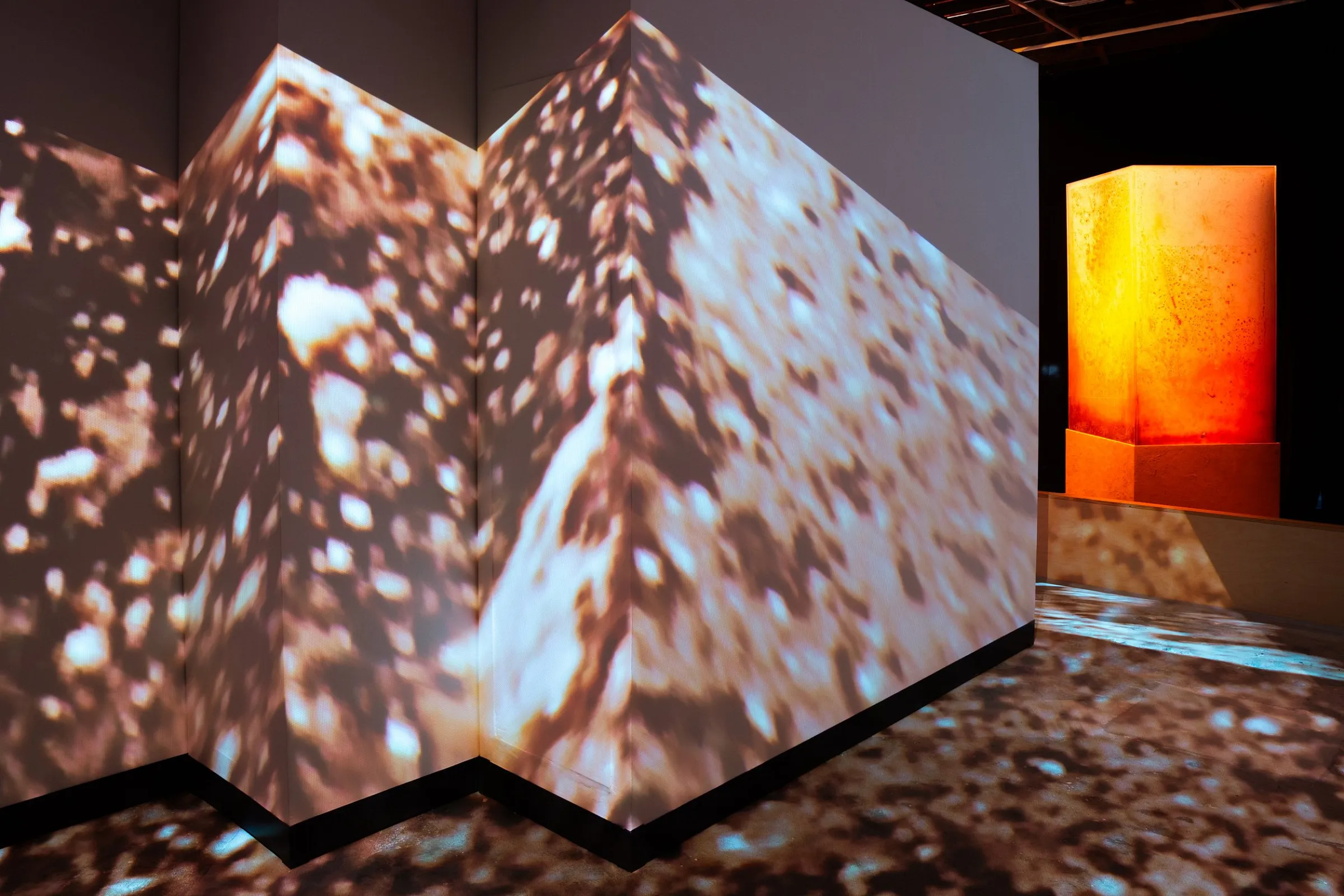Ashanti Chaplin: “The Hidden Gospels Of Dust“
Tulsa Artist Fellowship Flagship
April 5, 2024
It’s spring in Tulsa and a lot of people are suffering. Often ranked as one of the worst locations for allergies, the city is beautiful but terrible right now for people sensitive to dust, dirt, and particles in the air. But stepping into the Tulsa Artist Fellowship Flagship space for Ashanti Chaplin’s solo exhibition The Hidden Gospels of Dust will transport you into a space adrift and grounded with the beauty of dust — without the need for an antihistamine.
Walking into the gallery, viewers face both the monumentality and ephemerality of Chaplin’s chosen medium. Two large plinths plastered with red dirt and topped with plexiglass boxes towered over the space. Each box contained ochre dust that was activated by an atomizer-like device, which vacuumed and propelled earth through hoses and into the boxes, depositing dust within them and across the interior surfaces of the glass.
Spilling over stepped walls on another side of the gallery, a swirling, sprawling video installation displayed found footage from demolition sites. The zoomed-in image felt more like witnessing the Big Bang, generative and creative in spirit, than a document of a downed building. An improvisational score composed and directed by Chaplin and performed by Timothy Haverkamp energized the space. Chaplin described the score as an essential component of the sculptures and the video as a way to instigate a meditation on space and time, a “way of amplifying and putting a fine point on time to be in a different state — a way to connect beings and works in a space together.”
Oklahoma’s connection to dirt and wind is historic and renowned, transcribed in folk ballads and recorded photographically by artists and documentarians working for the Farm Security Administration. The Hidden Gospels of Dust feels like something that could only have been made in Oklahoma. Chaplin has always been obsessed with red dirt in our state, and upon returning to Tulsa from her time in New York, she stumbled upon using earth as a medium and subject.
Chaplin has collected clay, soil, dust, and earth from across Oklahoma, considering notions of site-specificity and how to share “place” through her work and material. The samples she gathered can be attributed to specific locations, but the very nature of dust resists such categorization; because of wind patterns, dust contains elements ranging from the solar system, the Sahara, our skin, and our own backyards.

Chaplin was busy on April 5. After the opening reception for The Hidden Gospels of Dust ended, she performed a 20-minute walking meditation with her piece Earth Elegy, on view in “We Have Arrived,” a group exhibition curated by Yatika Starr Fields and Allison Glenn. Earth Elegy features a thirteen-foot earthen clay obelisk sourced from Oklahoma’s thirteen remaining all-Black towns — Boley, Brooksville, Clearview, Grayson, Langston, Lima, Red Bird, Rentiesville, Summit, Taft, Tatum, Tullahassee, and Vernon — and draped in deep brown fabric.
Connected not only through medium but through concept, Earth Elegy and The Hidden Gospels of Dust are charged with the profundity of earth, the specificity and ambiguity of place, and a connection to a divine or cosmic life force. Dust can be generated from erosion, the weathering and breaking down of earth, but Chaplin also creates new landscapes here. The buildup of dust within her sculptures points to what can be created with the right energetic force.
Chaplin will offer a performance within The Hidden Gospels of Dust at the Flagship space in May. The exhibition is open through June 8, and the space is open Thursday through Saturday between noon and 6 p.m.






